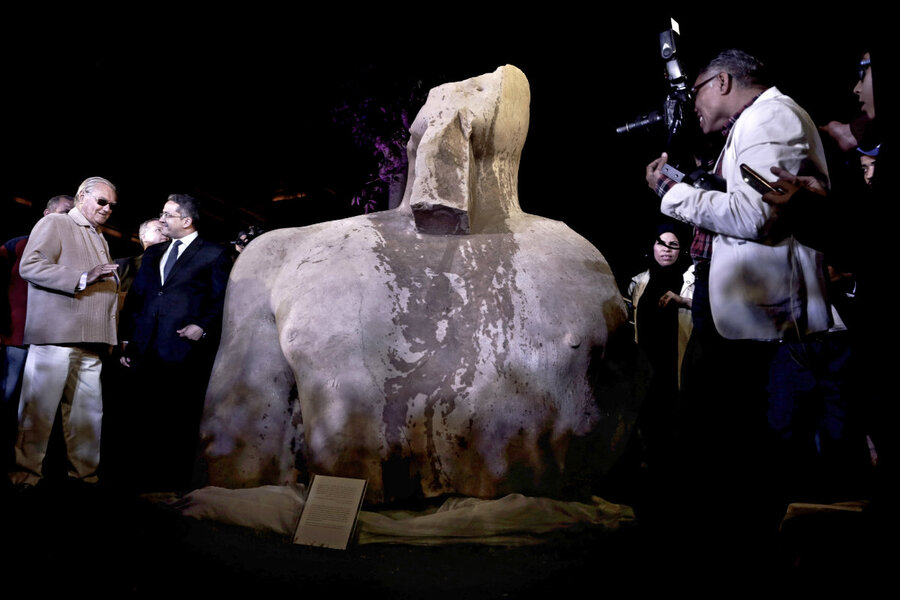Two pharaohs, one statue: A tale of mistaken identity?
Loading...
A colossus recently found in Matariya, a working-class neighborhood in Cairo, has proven tricky to identify.
Shortly after the 26-foot tall statue was unearthed on March 7, it was identified as Pharaoh Ramses II, one of ancient Egypt’s best-known rulers, but now Cairo officials say it likely portrays Psamtik I, a lesser-known pharaoh of the 26th Dynasty.
If confirmed, the piece would be the largest statue of the Late Period ever discovered.
“We are not going to be categorical, but there is a strong possibility that it’s of Psamtik I,” said Khaled El-Enany, the Egyptian antiquities minister, at a news conference Thursday in the front of the Egyptian Museum in Cairo, according to the Associated Press.
Probably Egypt's best-known pharaoh, Ramses II reigned more than 3,000 years ago, from 1279 to 1213 B.C. During his decades on the throne, he expanded the Egyptian Empire to reach from Syria in the east to Nubia (today’s northern Sudan) in the south.
Ruling about 600 years after Ramses II, between 664 and 610 B.C., Psamtik I is credited for ending years of turmoil and bringing stability to Egypt during his 50-year reign.
The key piece of evidence in the statue's re-identification, Mr. Enany said, is a hieroglyphic inscription on the back of the colossus that bore one of the five names of Psamtick I – “Nebaa.” The researchers had not found any inscription when the broken head and torso were first discovered, according to Enany’s statement at the time.
The statue's true identity might be more complex, Enany added. “There is a possibility, albeit small, that Psamtik I reused an older statue that may be of Ramses II,” he told reporters.
The statue, whose torso and head were excavated by a team of Egyptian and German archaeologists among mud roads and unfinished buildings in a Cairo slum last week, was promptly hailed as “one of the most important discoveries ever.”
Enany said at the time the massive quartzite figure was “most probably Ramses II,” as the treasure was found in front of the gate of his temple in ancient city Heliopolis – a sacred place for the Egyptian sun god Ra.
Egyptian officials are hoping statue's discovery will renew international interest in its history and benefit its tourism industry, which has suffered since the Egyptian revolution in 2011 that toppled autocrat Hosni Mubarak.
Enany stressed that the statue's identity won't be conclusively known until the statue is restored. The two massive pieces of the statue, which together weigh some 51 tons, have already been sent to the Egyptian Museum to be restored for future display at the new Grand Egyptian Museum in Cairo – slated for opening in 2018.
But for Moamen Othman, chief of restoration at Egyptian Museum, a major challenge lies at how to make sure the statue survives in an environment different from the one from which it emerged: water and mud.
"It's important that we study the process of environmental adjustment for the statue,” he told the Associated Press. “It will take three months to do."
This report includes material from Reuters and the Associated Press.






